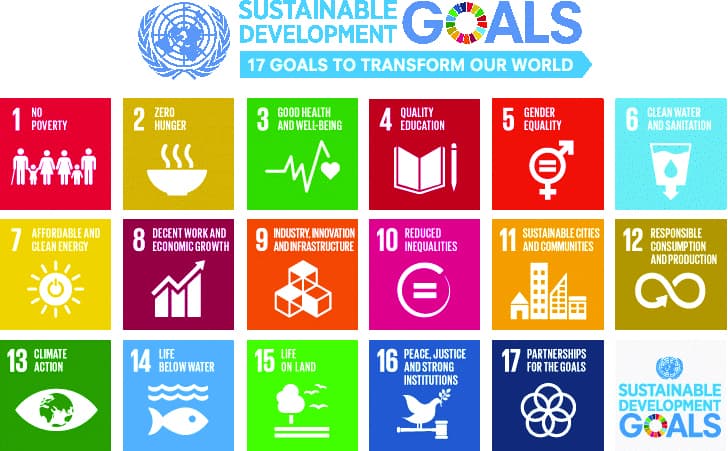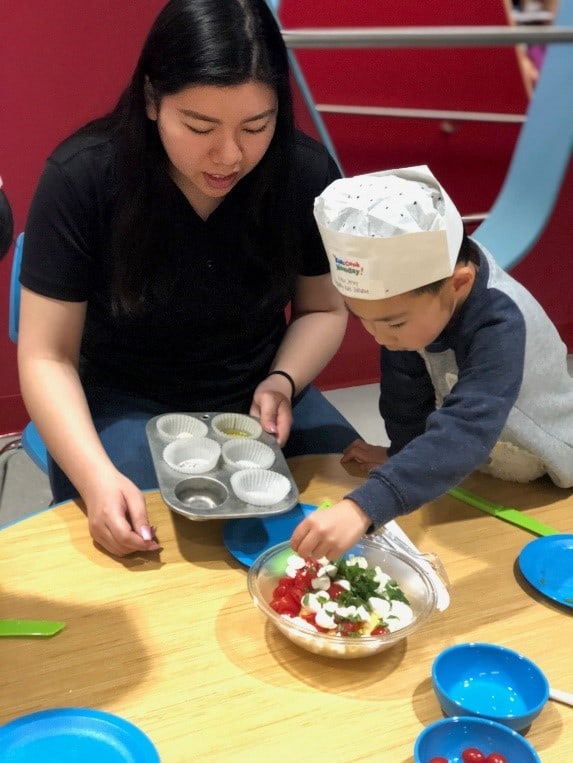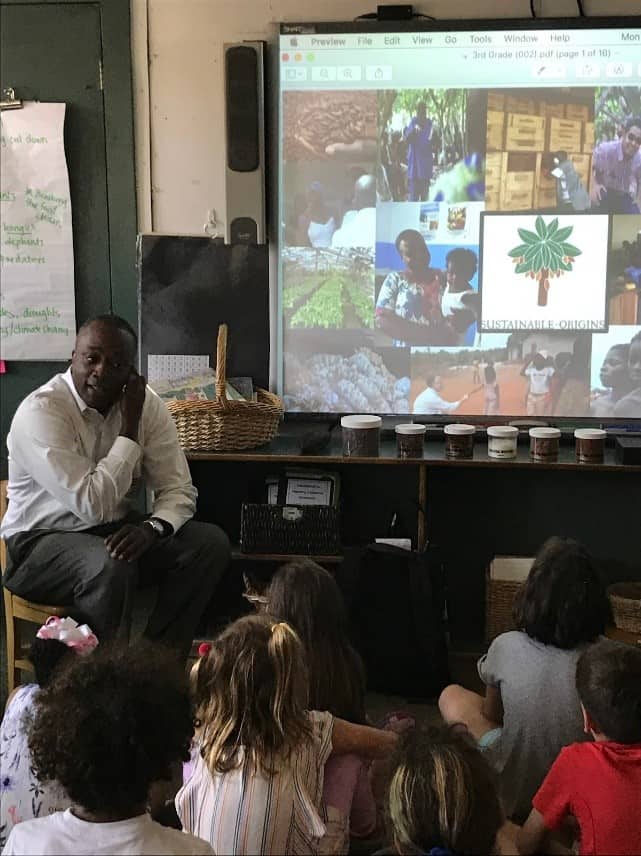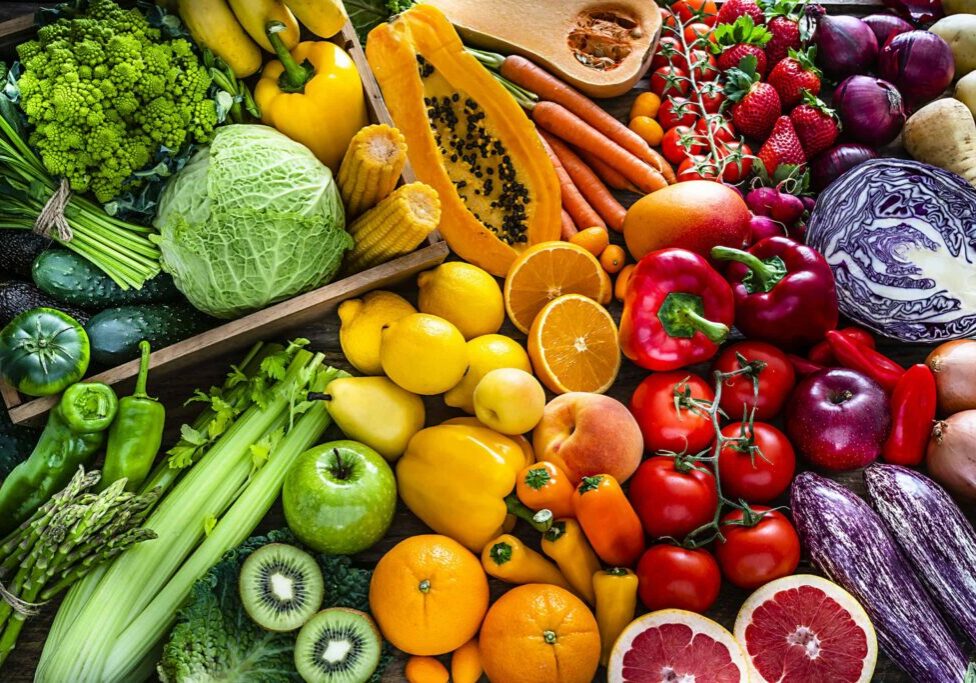Food literacy and global citizenship
By Erin Comollo, Ed.D.
Food is universal. We all have a story, an experience and an emotional connection to food. In this way, food is the perfect vehicle to teach students complex concepts using a tangible, relatable topic.
As a former classroom teacher and in my current work as program development administrator for the New Jersey Healthy Kids Initiative, I have firsthand experience with the transformational learning that occurs when we teach food literacy and global citizenship education to students of all ages. These topics offer a unique opportunity for multidisciplinary instruction that addresses learning standards and 21st-century skills across content and age groups. As a result, students become active citizens and advocates, making their schools, homes, communities and planet healthier, happier places to live.

Food literacy
Food Literacy (Figure 1) is the understanding that our food choices affect our health, the environment and our economy. The emerging framework of food literacy is a comprehensive concept that addresses nutrition knowledge, culinary literacy (the ability to select, prepare, and eat foods), and behavioral change. Food literacy has been linked with improved nutritional intake and health outcomes (Amin et al., 2018, 2019; Muzaffar, Metcalfe & Fiese, 2018).
What’s more, research shows that if we teach children to cook, they shop differently, fill their plates differently and consider their impact on the environment differently (Amin et al., 2018).
Inherent in food literacy is the understanding of food systems. It is often said that “everyone eats, so everyone is involved in a food system.” According to the definition provided by the Food and Agriculture Organization (FAO), a food system encompasses all the stages of keeping us fed: growing, harvesting, packing, processing, transforming, marketing, consuming and disposing of food.

Food Justice (Figure 3) is where food literacy and global citizenship education intersect. It is as a social movement with “multiple layers … of producers, processors, workers, eaters, or communities, for whom race, ethnicity, class, and gender issues are at the forefront of an agenda that includes a mix of producing food, local preference, environment, economic development, health food for all, preparing, cooking and eating, and public health and nutrition.” (Gottleib & Joshi, 2010, as cited by Holt-Giménez and Wang, 2011, p.88). Food justice links food system processes and players to issues of inequality, climate change, and health.
Curriculum development
Putting these topic areas into practice across disciplines and age groups requires an elegant blend of pedagogical approaches, including inquiry-based learning, project-based learning, and service learning. Using these modalities, teachers can foster lifelong participatory learning across contexts, dispositions of openness, caring, and empathy, and critical, creative, and innovative thinking.
When my co-teacher Jessica Howe and I began to develop our curriculum, we started by applying the “micro to macro” thinking approach that GCE encourages. We created five broad units based on our belief that for students to have a deep and meaningful understanding of the community and the world, they first need a layered development of the self and the interpersonal.

The units were:
1. Identity: exploring ourselves, diversity and mindfulness
2. Ourselves and Nature: observing our natural world, changes and threats
3. Local Community: recognizing types of communities; their history, changes and issues
4. Global Community: finding parallels between history, changes and issues to a global location
5. Advocacy: application of learning for change
We decided to use the U.N. Sustainable Development Goals (SDGs) to guide our goals and objectives. The SDGs (Figure 4) were formed in 2015 by world leaders and the U.N. The goals address worldwide issues such as poverty, inequality, and climate change, hoping that global collaboration toward meeting the goals would ensure a better future for all.
Using the Understanding by Design approach to curriculum development, we started developing some “big ideas” base on the SDGs. We used these to form specific objectives, long-term transfer, and essential questions linked to those big ideas (see sidebar). Next, we examined what skills, attitudes, values and attitudes we wanted to adjust based on the GCE competencies. From there, we planned instructional experiences and activities across content areas with corresponding formative assessments.

Examples in practice
Early childhood
Culinary literacy and cooking are the perfect opportunities for young children to develop fine motor skills such as cutting, rolling, pouring and scooping. It also provides sensory processing opportunities as the children touch, taste, feel, and smell new ingredients and recipes. Children learn best from hands-on, multisensory experiences such as these.
Research has shown that culinary nutrition education programs can increase feelings of self-esteem, confidence and self-efficacy from a social-emotional perspective. Cooking in the classroom also supports executive functioning and social skills such as cooperation, communication and following directions.
Instruction can incorporate early literacy such as food-related read alouds, sequencing the plant life cycle or recipe steps. Children can apply early math concepts like measurement and volume while measuring out different ingredients. In science, they can learn about the seed-to-plate process, observe batter turn into baked goods in the oven or explore their senses as they sample different foods.

Elementary school
For older students, inquiry- and project-based learning encourages students to do some real-world problem-solving in authentic experiences, tied to real-life global issues, with the opportunity to present to a real audience. We used this opportunity to teach student-led discussion techniques and thinking routines that linked our local issues of deforestation with issues in Ghana caused by cacao farming and production. This parallel led to an in-depth study of cacao, chocolate and Ghana.
Teaching about food provided us with content that lent itself to deep, meaningful learning in our classroom. Our students considered how geography, climate and the natural resources of a region influence how people live and work. They observed how human interaction with the natural environment is driven by needs and wants and access to resources and scarcity, which led to conversations around food insecurity, clean water and health care. They learned how to engage in dialogue and debate while developing open-mindedness and an appreciation for different cultures’ complexities.
Secondary and Higher Education – Global Citizenship
Because of these topics, depth and breadth, they can easily be integrated into secondary and higher education curricula. Applying the same topics, themes, frameworks, and even some activities, I had the pleasure of working with an impressive group of Douglass College students during a yearlong course called Global Cuisine.
Over the year, we explored food systems through the lens of feminism, i.e., how women are affected by agriculture, marketing, consumption and the culinary industry. As you can imagine, lots of issues regarding equity and food insecurity arose. Students researched and presented changemakers, foods and food movements and brainstormed how they could make their lives to reflect their learning. Their presentations challenged and inspired their classmates, leading to changes in perspectives, purchasing and consumer behavior.
The year culminated with a student service-learning project that addressed the topic of food systems and U.N. Sustainability Goal 10 to reduce inequality. Students wrote a white paper on maternal and child insecurity for the Central Jersey Diaper Bank.

Adapting to virtual learning
These are all ideal activities for in-person instruction, and the forced pivot toward virtual learning has posed some challenges. This past summer, my team and I implemented a six-week curriculum designed for third through fifth-grade students to explore some of the facilitators and barriers of presenting a food literacy program in a virtual format. We used WebEx as our video platform and ClassDojo as our student portfolio system.
Our co-teachers took turns leading instruction and moderating the chat box and technical issues each lesson. Children attended live classes on Tuesdays and Thursdays (either morning or afternoon) for 30-40-minute lessons on different aspects of food literacy. They would complete follow-up hands-on activities on their own time at home. These activities included planting seeds, making recipes and playing games. Children loved the program’s hands-on, experiential aspects and engaging with their teachers and peers on screen.
Closing thoughts
Students as young as six and as old as 20 learned that as citizens, they have the power to make choices that can make their homes, schools and communities a better place to live and that they can protect the environment. They learned how to make informed and reasoned decisions by seeking and assessing information, asking questions, and evaluating alternative solutions. They worked together on collaborative projects to address real-life issues at home, school, in the community, and beyond and what taking appropriate action against unfairness looks like.
Educating students with topics that relate to their daily lives, such as food, can empower them to be healthy, happy, and engaged citizens.
Dr. Erin Comollo is the program development administrator for the New Jersey Healthy Kids Initiative (NJHKI) in the Institute for Food, Nutrition, and Health at Rutgers University. A former classroom teacher, Erin holds a bachelor’s degree in early childhood education and fine arts from The College of New Jersey, a master’s degree in early childhood education and supervision from The College of New Jersey, and a doctorate in education with a teacher leadership concentration from the Rutgers University Graduate School of Education. Comollo can be reached at erin.comollo@rutgers.edu.
Big Ideas
Cause and Effect and Interdependence
• Geography, climate, and the natural resources of a region influence how people live and work.
• Human interaction with the natural environment is driven by needs and wants as well as access to resources and scarcity.
• Human interaction can impact the natural environment both positively and negatively.
Essential Questions:
• How do our choices affect ourselves, the environment, and the world?
• What causes changes over time?
• What effect do economics have on a community? The environment?
• How do geography, climate, and natural resources affect the way people live and work?
• What effect do people have on their environment?
• For what reasons do humans change their environment?
• How are communities alike and different?
Specific Objectives & Long-Term Transfer Goals:
• Recognize and respect that people have different perspectives based on their beliefs, values, traditions, culture, and experiences.
• Recognize their relationships to the people, places, and resources in the local community and beyond.
• Engage in dialogue and debate.
• Make choices that can make their homes, schools, and communities a better place to live and that can protect the environment.
• Collect information and present findings about real-life issues.
• Make informed and reasoned decisions by seeking and assessing information, asking questions, and evaluating alternative solutions.
• Take appropriate action against unfairness.
• Work together on collaborative projects to address real life issues at home, at school, in the community, and beyond.
